Over time, the strings on your violin will become worn and you will need to consider replacing them. However, strings can be very different to each other, and exactly when you need to change your strings will depend on a number of different factors:
Material
The material that a string is made of can make a big difference to how long it lasts. Gut strings generally wear out more quickly than steel strings. Check the specifications of the strings you have (take a look at the packet, or if you no longer have it, check the manufacturer’s website) to see what your strings are made of.
Condition of the Material
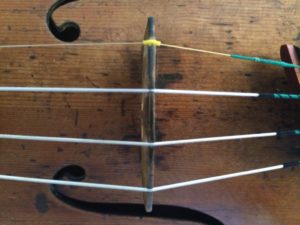
Some strings have an outer layer of wrapped metal, and this can sometimes become loose and begin to unravel. This is especially common where your fingers touch the fingerboard. The repeated action can cause the string to become stressed, which can weaken it.
Wear and tear is also common where the string touches the violin near the nut (at the bottom of the scrollbox) or the bridge (see picture).
It’s worth checking that the nut and bridge of your violin are in good condition; if the grooves where the string should sit are not correctly engineered, then they can cause damage to the strings too.
String Damage
If strings do unravel, change them straight away! It can be dangerous to your fingers to play with strings which have a damaged outer layer, even for a couple of minutes.
Sometimes strings snap (commonly at the pressure point where the string rests on the bridge, but it is possible to snap elsewhere too), and if this happens they will be completely unusable, and you will need to replace them. For this reason, it is worth carrying a set of spare strings with you at all times!
Sound quality
Even if strings do last for a long time without breaking, they will eventually start sounding dull and will become difficult to tune. When a string is old and worn, you may be able to hear inconsistency in the pitch. Also think about the resonance of the sound you are making – does it usually sound like this? If you find that the sound you are producing doesn’t seem as clear as usual, then (assuming there is no fault in your technique!) this may be another clue that your strings are showing their age!
Usage
The amount of time you spend playing your violin will obviously affect the lifespan of the string! The more you play, the more the strings will vibrate, and the more their lifespan will decrease. However, there are things you can do to minimise the impact.
Do you clean your strings and fingerboard regularly? If not, the build up of dirt may cause some strings to age more quickly. Do you sweat a lot in your hand and fingers, or are your fingers oily? Be sure to clean up any residue at the end of your practice. Do you wash your hands before playing your violin? Could this affect the cleanliness of the strings?
Guidelines
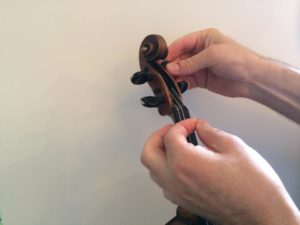
It’s really hard to define useful guidelines about how often to change your strings, simply because there are so many different factors and each string will have a slightly different lifespan. On many internet forums you’ll find recommendations for changing strings ‘every 120 hours’ or ‘every 3 to 6 months’. But changing strings very regularly regardless of their condition can become an expensive habit.
Some people keep their strings on for a number of years (especially metal strings which last longer), and no doubt keeping things clean and well-looked after will help extend the lifespan. But strings which have been on a violin for an extended period of time are unlikely to work so well. Even if they remain in a good working condition, the tone quality will be significantly reduced.
You can be strategic about when to change your strings. For example, if you have a few months before a big concert when you are just practicing on your own, then it makes sense to change the strings a couple of days or weeks before the concert, so that they are still fairly fresh.
And sometimes the choice about whether to replace a string can be obvious. If you have an old violin that you haven’t played for many years, it’s best to change the strings; the tension holding the strings in place will have made them age them over time, even if they haven’t been played!
Assessing Strings
If you’re unsure about strings, or if you don’t have any information about what make they are or how long they have been on a violin, then use these simple questions (based on the information above) to identify whether or not they need to be replaced:
ViolinSchool’s recommendation: look after your strings well, be aware of all the factors above, and listen carefully to the tone you are producing. This should allow you to make an accurate assessment of whether your strings have remaining life or not. If you are in any doubt, and if it’s been a long time since you last changed the strings, then it’s definitely worth replacing them for new ones.
Here's something that we covered in our first research session of the season last week. I wanted to share it with you quickly, before we add it to the online courses:
The Angle of the Wrist
When you're playing the violin, it's very important that the fingers can move freely without causing any tension in the hand or arm. But if the angle of the wrist is incorrect in relation to the arm position, then it's easy for that unwanted tension to appear.
Even if your wrist is incorrectly bent, it might not feel like a problem until you use the fingers. But once the fingers are dropping down from the knuckles, you'll start to feel a strain in your arm if the wrist is not at the correct angle.
A nice way to think of this is to line up your bow against your arm, and imagine an axis that goes right down the middle of the hand, wrist and arm in a straight line.
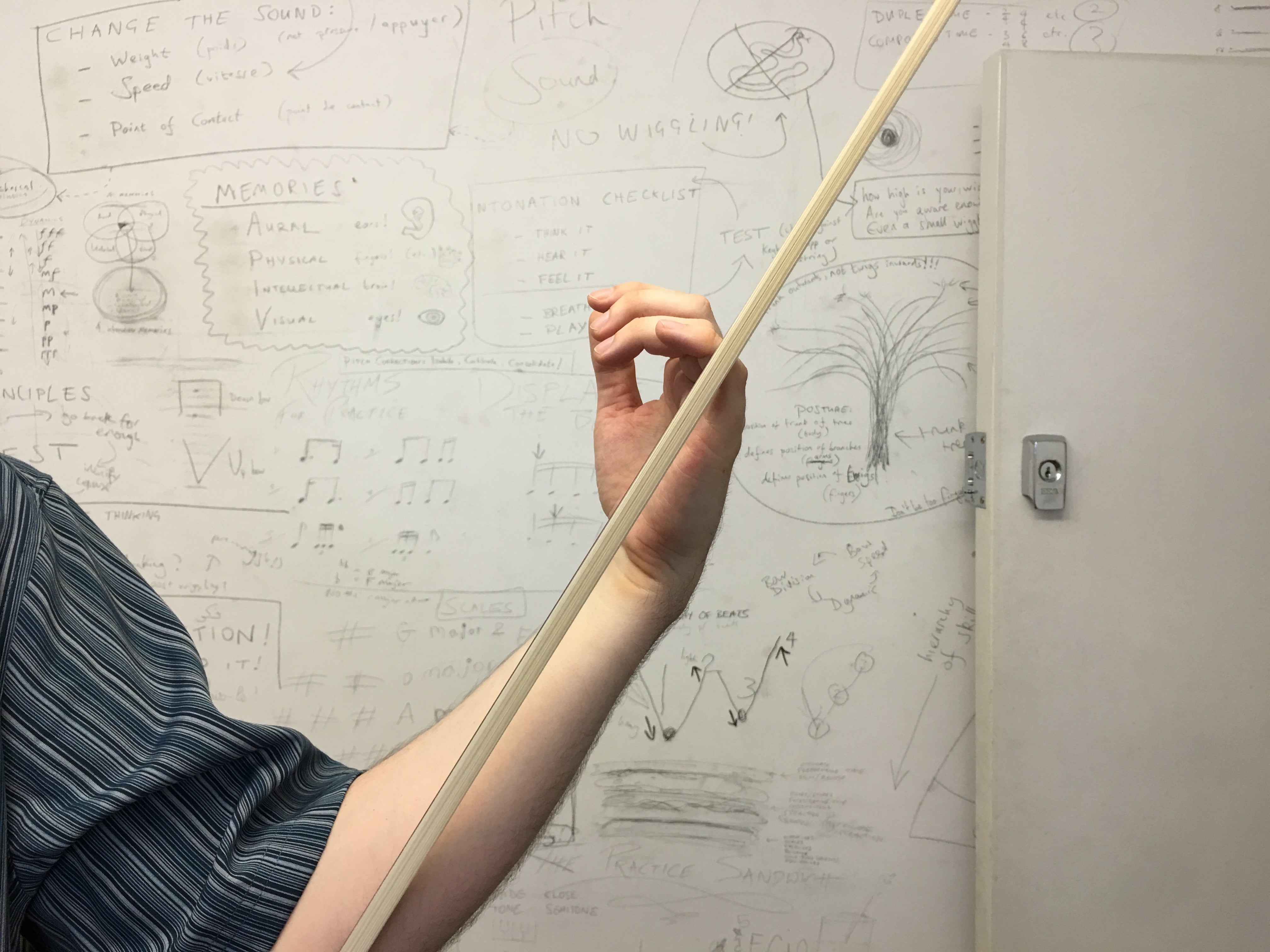
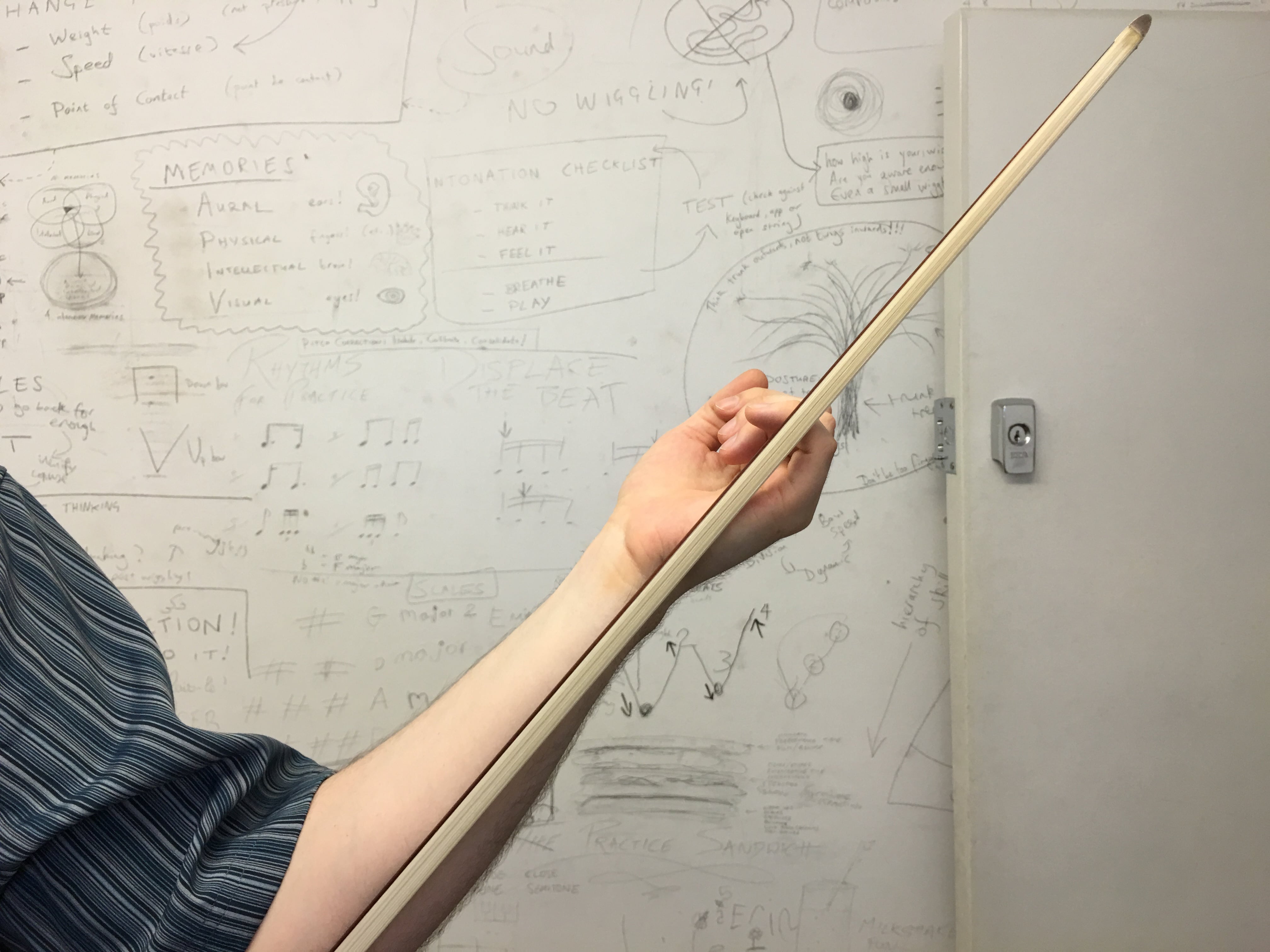
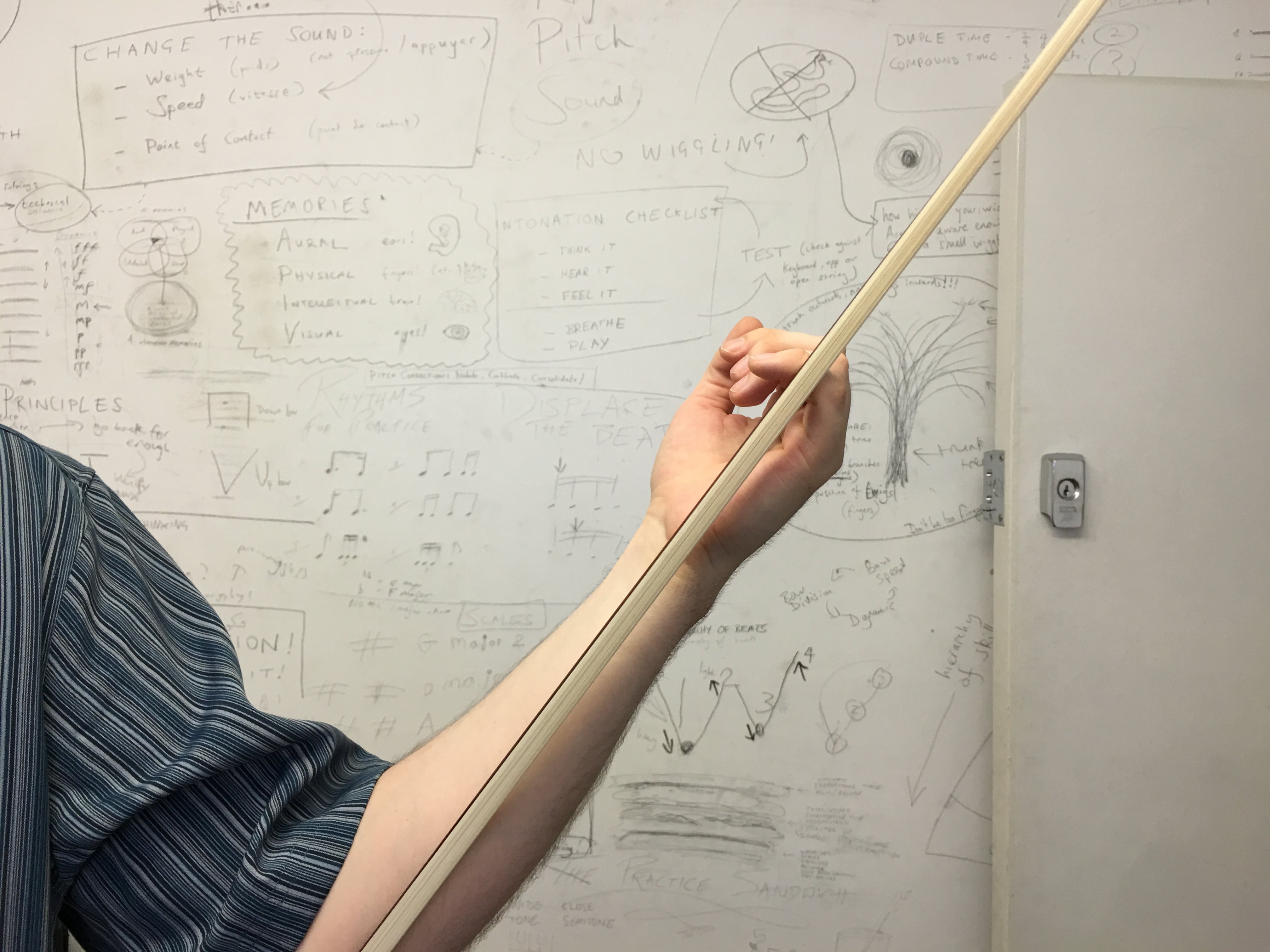
And now with a violin...
Here are the same arm positions again, but with a violin so that you can see how this works with the instrument itself. In this example, the violin is being played in the 3rd position.
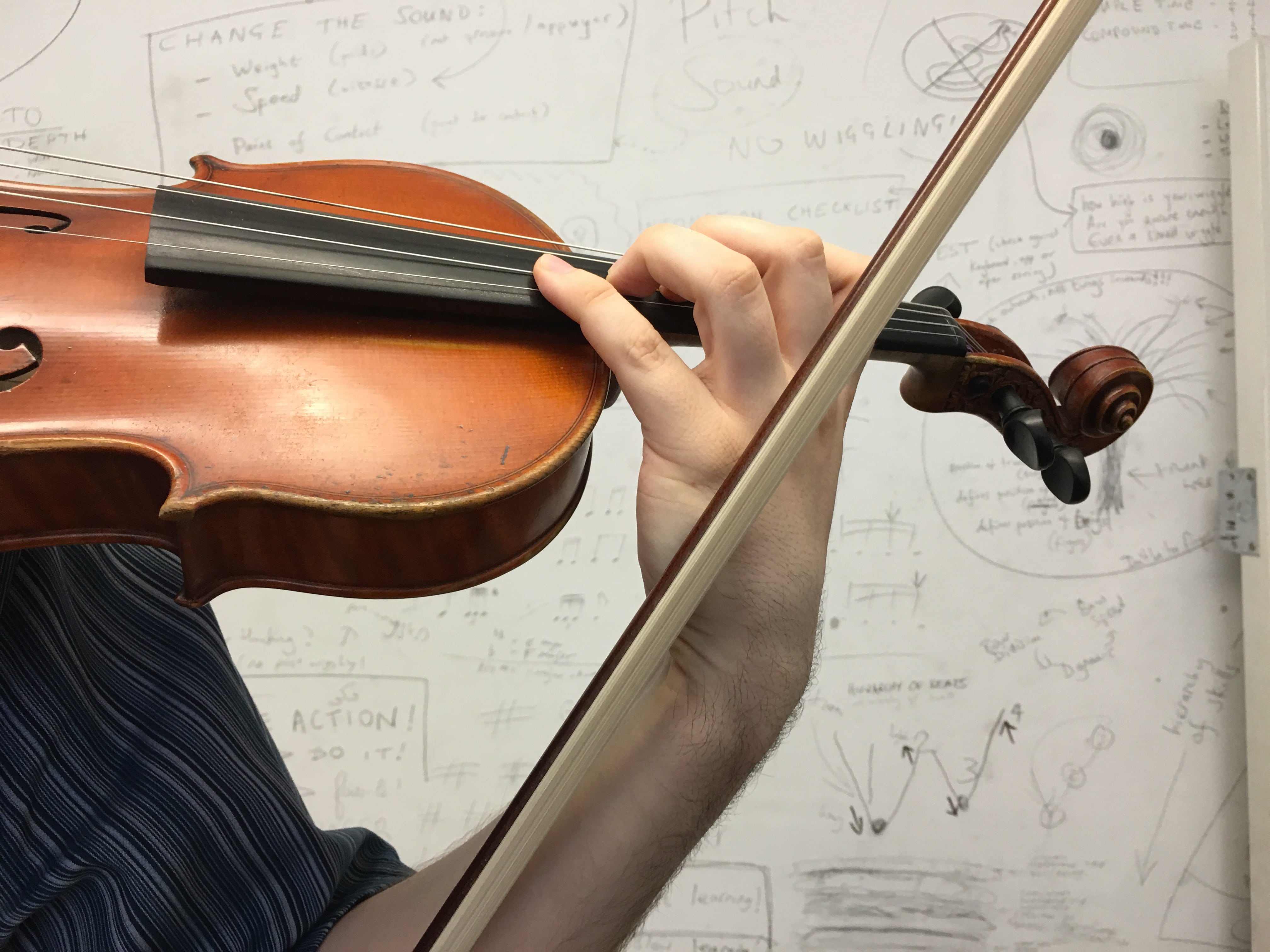
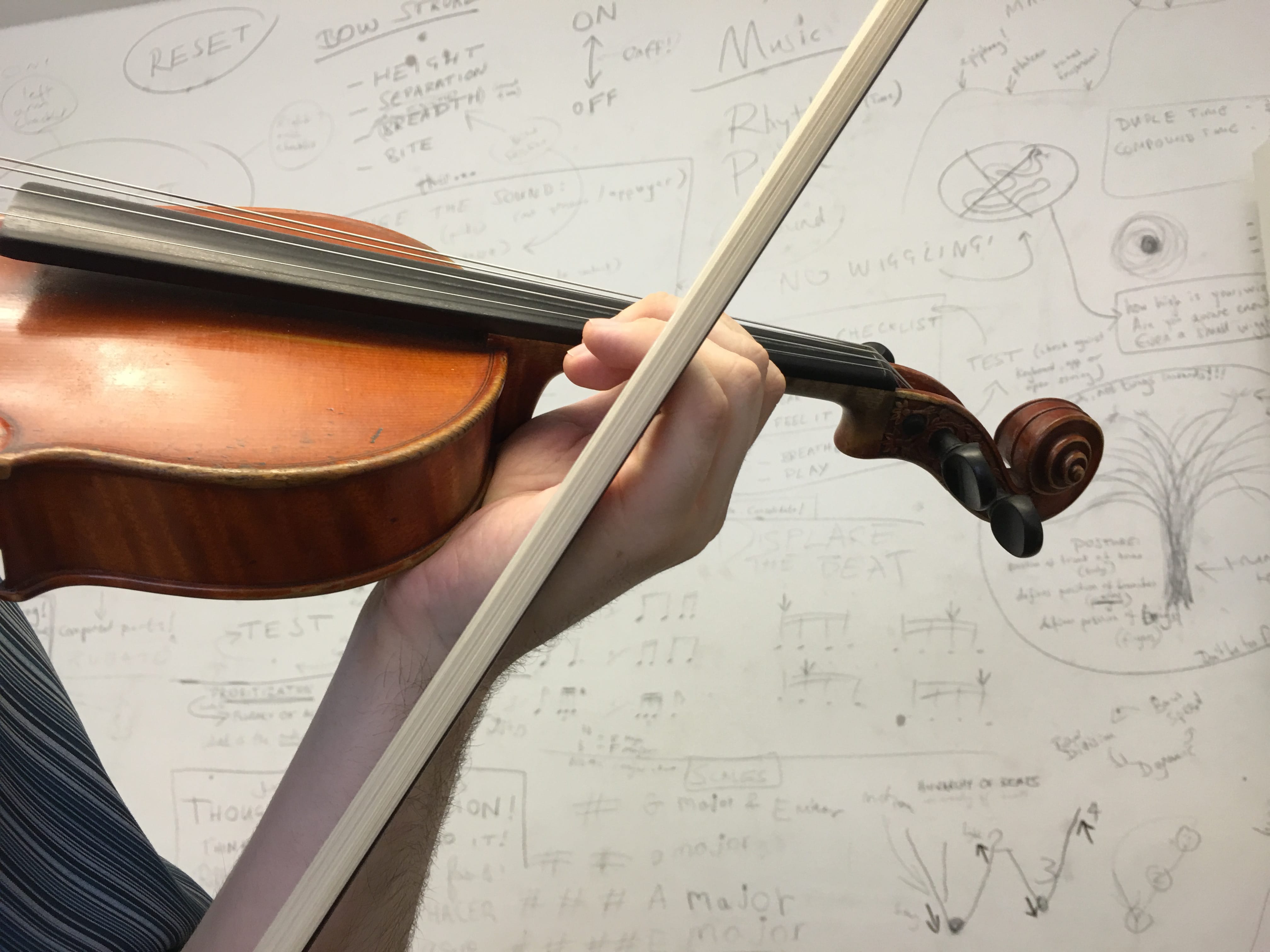
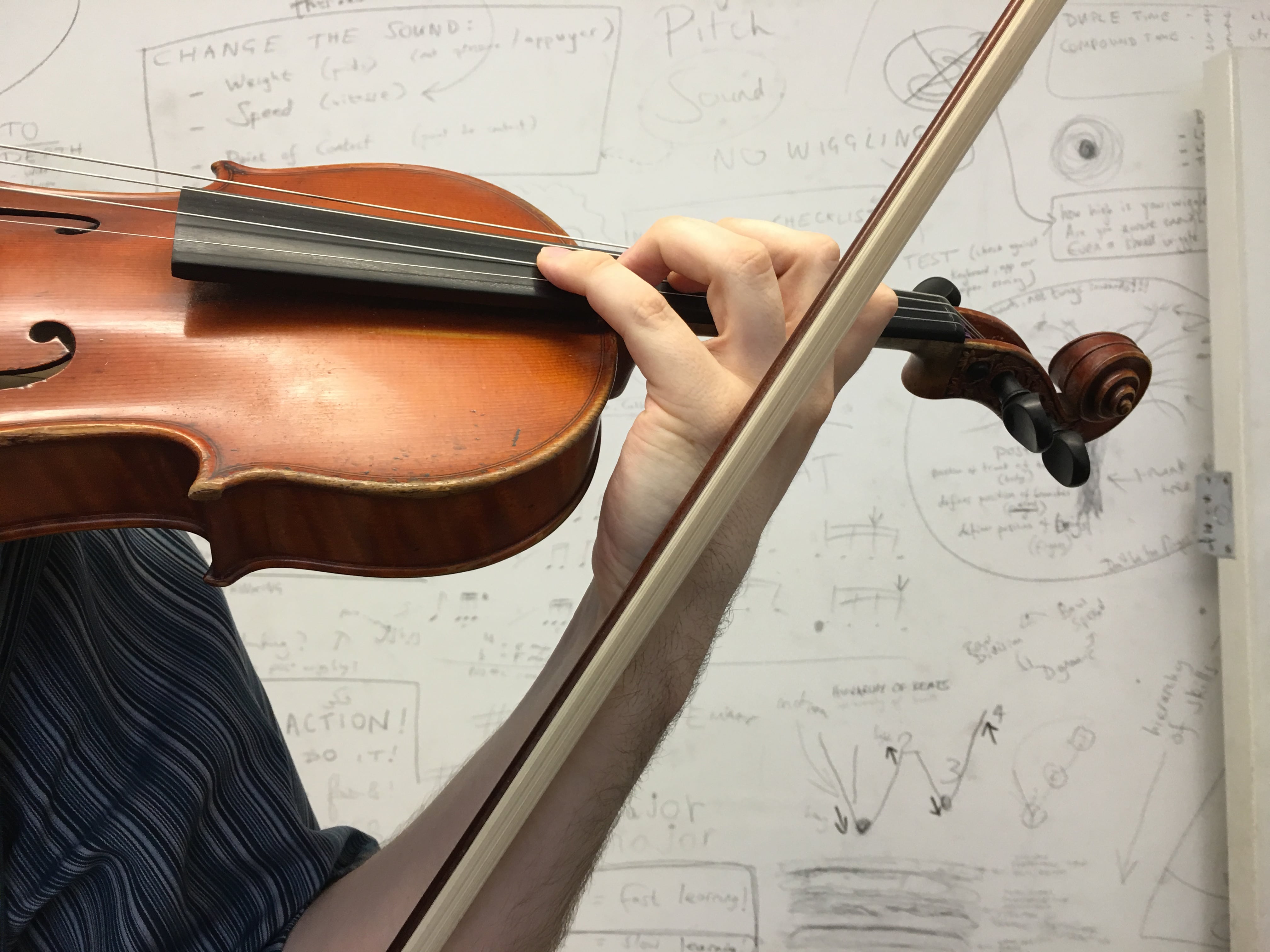
(When you start going into even higher positions - i.e. 4th position and above - the angle of the wrist changes as we move around the instrument. But we'll cover that in future modules!).
Big thanks to our model, Prof. Worswick, for the loan of his left arm! 😉
Topics like these are usually easier to understand by watching a video, so I'll film an explanation about this soon. If you've got any questions about this topic that you'd to cover in the video, then please let us know via [email protected]!
- Simon
If you're reading this, you've chanced upon www.violinschool.com during the test period...
The new site will be available soon, but for now you can still access our old site at www.violinschool.org.
Please return here in a few days to enjoy the new Learning Platform!
